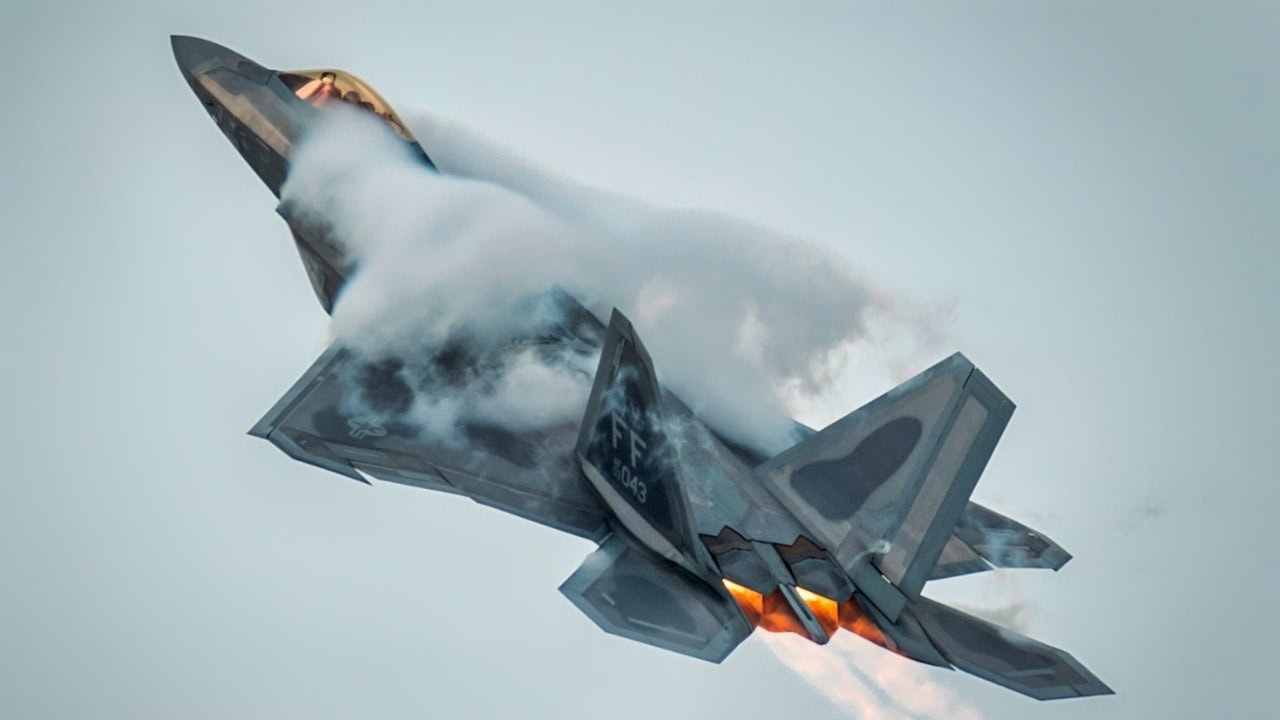The US Air Force’s fifth-generation fighter, the F-22 Raptor, is nearly 30 years old, but it is still the stealthiest aircraft in the world. Introduced in 2005, it is the world’s first mass-produced fifth-generation fighter jet and has been a cornerstone of the US Air Force’s air superiority strategy. Currently, there are 178 F-22 fighters in service.
While the Raptor was already supposed to be retired by now, the Air Force is constantly upgrading the aircraft with enhancements that will keep it on top of its game until the time comes for the Next Generation Air Dominance (NGAD) program, slated to be ready in the 2030s.
New Sensors, More Survivability, More Lethality
In late January, Lockheed Martin secured a $270m contract from the USAF to upgrade its F-22 Raptor with upgraded infrared threat-detection sensors. This newest enhancement will improve the aircraft’s survivability and lethality by integrating the Infrared Defensive System (IRDS).
This enhancement is part of a $7.8 billion modernization program, which aims to improve situational awareness with advanced Infrared Search and Track pods while ensuring stealthiness.
Hank Tucker, Vice President of Lockheed Martin Missions Systems, said, “We understand the need for advanced and versatile infrared systems like IRDS, which will make pilots’ missions more survivable and lethal against current and future adversaries.
“We’re committed to supporting the Air Force through continuous innovation of capabilities to deter and defeat evolving threats.”
The F-22 Raptor Is The USAF’s Fireman Traveling To the Hotspots
The United States Air Force sends the F-22 whenever a US or NATO ally needs support to protect its borders or airspace. The F-22 flies in to put the fires out and project power and deterrence.
In April 2023, F-22 fighters were dispatched from Poland to Amari Air Base in Estonia to bolster NATO’s Air Shielding mission and deter Russian aggression in the Baltic Sea region.
“It cannot be matched by any known or projected fighter aircraft, making it a highly strategic platform to support NATO Air Shielding,” the USAF said.
In November, the US deployed F-22 Raptors, and later F-35s, to Kadena Air Base in Japan as a show of force against China.
Kadena is located in Okinawa, one of Japan’s southwest Ryukyu islands, forming the first island chain. This US defense concept links Japan, Taiwan, and the Philippines, pooling allied nations to contain the Chinese military in the region. And it is only 370 miles from Taiwan.
The F-22 Raptor Gets Its Middle-Age Upgrades, Enemies Take Notice
The F-22 Raptor has it all: stealth, supercruise capabilities, and integrated avionics. And it just got better. A recent upgrade includes an advanced sensor suite to detect, identify, and engage threats before they can be detected.
The cockpit design and sensor fusion advancements have notably improved pilots’ situational awareness. Another contract involves upgrading the Raptor’s countermeasures.
The contract to integrate the IRDS system into the F-22 will help preserve the aircraft’s air superiority fighter role and competitive edge as the US military confronts more advanced threats from its enemies, especially China. If you have any doubts, listen to what its pilots say.
Aviation expert and good friend Alex Hollings at Sandboxx relayed an interview with Raptor test pilot Mike ‘Dozer’ Shower for an intriguing article about the F-22 this week. Dozer compared the F-22 Raptor to the F-15.
“In an F-15, you’re sensor operator, you’re working the radar; you’re the guy working this all out and managing the systems and putting together the 3D picture in your head.
“That’s the difference with the F-22 Raptor. It does it all for you,” Shower recalled.
“You could take four weapons instructors in an F-15 each, and you could have some lieutenant who is ‘weapons clueless’ and he’s gonna find them all and kill them all. Then you put one really good guy in an F-15 against a Raptor, and he’s still gonna get killed; there’s that much of a difference in technology. It’s about sensors and training.”
These upgrades won’t be cheap, but you get what you pay for when you’re trying to keep the edge on your enemies. Money is the driving force behind the delays in the NGAD program. The F-22 is still the best fighter in the world and isn’t even the best we can produce.
About the Author
Steve Balestrieri is a 19FortyFive National Security Columnist. He served as a US Army Special Forces NCO and Warrant Officer. In addition to writing for 19FortyFive, he covers the NFL for PatsFans.com and is a member of the Pro Football Writers of America (PFWA). His work was regularly featured in many military publications.

